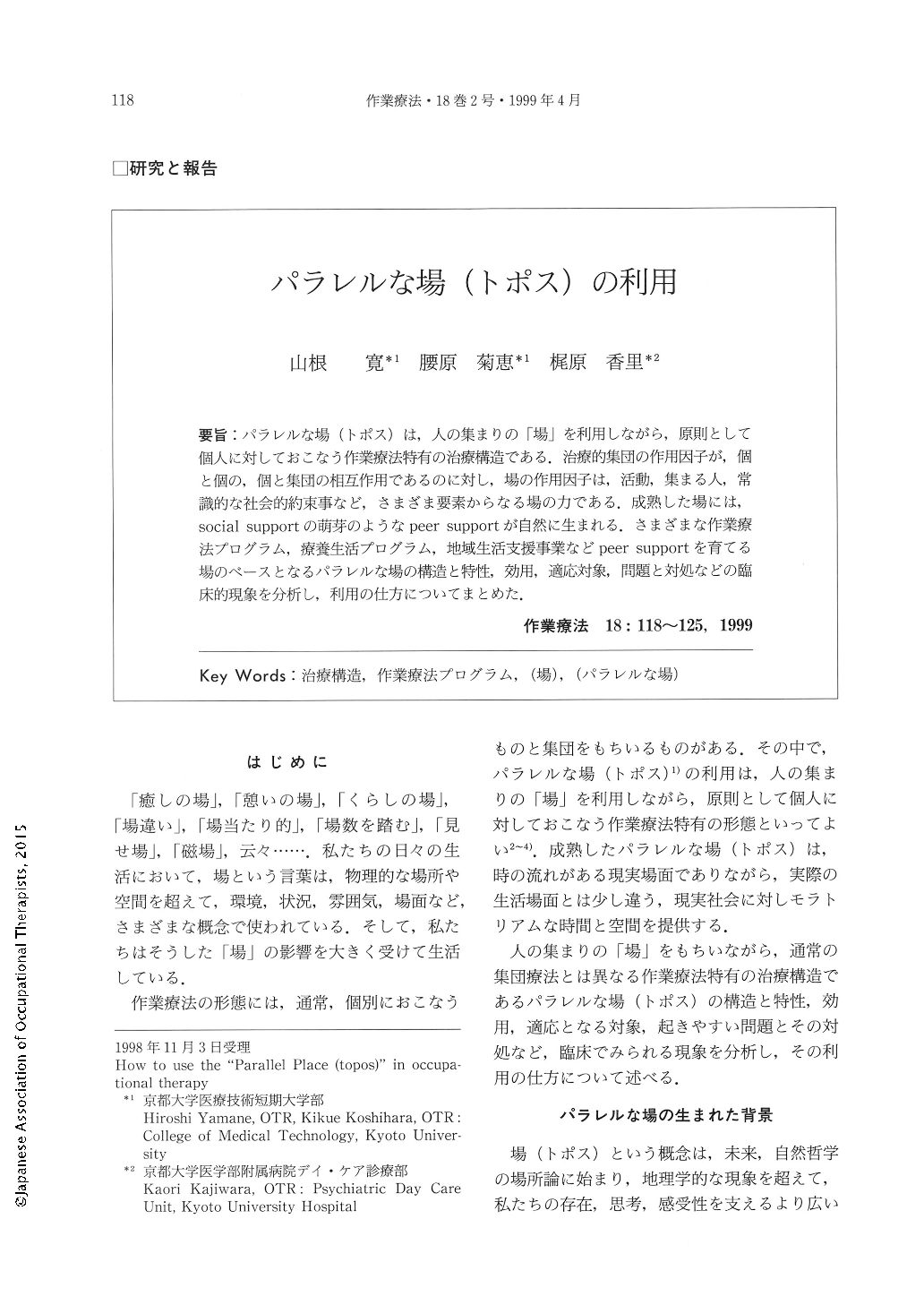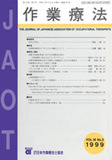Japanese
English
- 販売していません
- Abstract 文献概要
- 1ページ目 Look Inside
- 参考文献 Reference
- サイト内被引用 Cited by
要旨:パラレルな場(トポス)は,人の集まりの「場」を利用しながら,原則として個人に対しておこなう作業療法特有の治療構造である.治療的集団の作用因子が,個と個の,個と集団の相互作用であるのに対し,場の作用因子は,活動,集まる人,常識的な社会的約束事など,さまざま要素からなる場の力である.成熟した場には,social supportの萌芽のようなpeer supportが自然に生まれる.さまざまな作業療法プログラム,療養生活プログラム,地域生活支援事業などpeer supportを育てる場のべースとなるパラレルな場の構造と特性,効用,適応対象,問題と対処などの臨床的現象を分析し,利用の仕方についてまとめた.
The purpose here is to show the treatment structure and adaptation and effects of the Parallel Place (topos), and to consider how to use the Parallel Place (topos) in occupational therapy.
We use the term the "Parallel Place (topos)" to refer to the peculiar treatment structure in occupational therapy. The occupational therapy in the Parallel Place (hereafter cited as PPOT), which uses a place where people gather, is a kind of individual therapy. The principal treatment factor of therapeutic structured group is an interaction among individuals, or an individual-group interaction (group dynamics). While PPOT uses a place where people gather, it is the characteristic of PPOT not to use the group cohesiveness intentionally. The principal therapeutic factor of PPOT is the atmosphere, a kind of power of the place, that consists of activities, people, common social rules, and so on. There is no other term but atmosphere to express the therapeutic factor of PPOT.
PPOT is principally opened to anyone who wants to relax and create or express something with activities. People can try what they want to do in that program, without onlookers who have curiosity, discrimination, exclusion, and compulsion. The ripened Parallel Place is an actual situation, and offers a moratorium time and space to people who are there. Also, patients benefit from peersupport and social support which grow naturally, helping people to obtain their own coping skills after repeated trial and error. The occupational therapy program for an individual using the Parallel Place is a base program of task oriented groups, rehabilitation programs on the ward and a support system for psychiatric patients in the community.

Copyright © 1999, Japanese Association of Occupational Therapists. All rights reserved.


